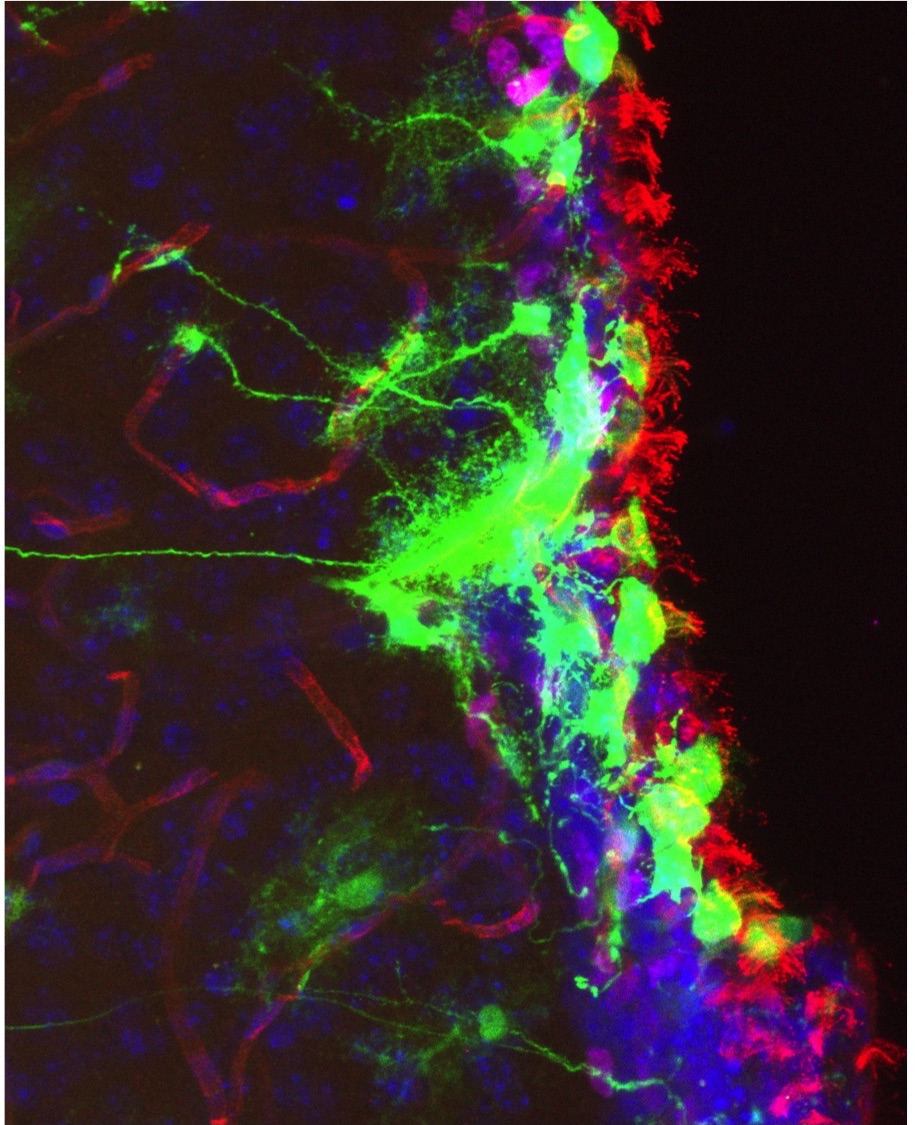By Helen Figueira
June 8, 2016
Time to read: 4 minutes
Two scientists from the MRC Clinical Sciences Centre (CSC) stepped into a pub to talk about their research with a lay audience last month. The evening was part of the nation-wide Pint of Science festival, with 320 events held in 105 pubs across the UK.
“We have the ability to get the public really excited about our work, if we only take the time to communicate it with them,” said speaker Tim Davies after the event. Davies is a PhD student in the CSC’s Cell Interactions and Cancer group. He discussed his research on stem cells in the brain and how they communicate with each other and the surrounding brain tissue. He also explored how scientists may one day be able to use these cells to repair the brain after illness and injury.
Davies was joined by his supervisor Simona Parinello, who leads the research group. Parrinello talked about the intriguing ways in which cells inside our brains can help damaged nerves to regrow after injury.
Here, Davies reports on the evening and how it allowed him to forge new connections.

By Tim Davies
The Pint of Science festival aims to give the public a taste of current research by hosting a series of talks in pubs across the country. Researchers present their work in an easy to understand way to a largely lay audience, followed by questions. The talks are grouped under a number of different themes. I, together with my PhD Supervisor Simona Parrinello of the CSC’s Cell Interactions and Cancer group, presented some of the work from our lab under the theme of “Regrowing the Brain”.
In my presentation I talked about my research on the behavior of stem cells inside our brains. Stem cells have the unique ability to become many different types of cells. This makes them an attractive tool for creating therapies to replace cells that have been lost through disease or injury.
My research focuses on investigating the complex combination of signals that control stem cell behaviour in the adult brain. If we can better understand these natural mechanisms of control, we may be able to harness the power of stem cells and use them in regenerative therapies.
The event was a great success; the audience was lively and engaged and had many questions after the talks. Several people approached me wanting to know more, and it was fantastic to note that, not only is it possible to effectively communicate complex scientific ideas to a lay audience, but also that we have the ability to get the public really excited about our work, if we only take the time to communicate it to them.
Participating in scientific outreach events like this makes it possible to forge new connections in the wider scientific community. After the talk we were contacted by a member of the science communications team at the Brain Tumour Charity. She enjoyed the talk and now wants to write a piece on the potential of stem cell therapies in brain tumour recovery, featuring some of our work with the aim of engaging members of the public, volunteers and patients.
Find out more about previous Pint of Science events.
For further information, contact:
Deborah Oakley
Science Communications Officer
MRC Clinical Sciences Centre
Du Cane Road
London W12 0NN
T: 0208 383 3791
M: 07711 016942
E:
Tim Davies, a PhD student at the MRC Clinical Sciences Centre (CSC), learned about the value of making connections at an unusual science gathering in a pub last month. The evening was part of the nation-wide Pint of Science festival, which saw 320 events held in 105 pubs across the UK during a week in May.
Davies discussed his research on stem cells in the brain, and how scientists may one day be able to use these cells to repair the brain after illness and injury. Here he reports on the evening, and how it allowed him to forge some new connections of his own.